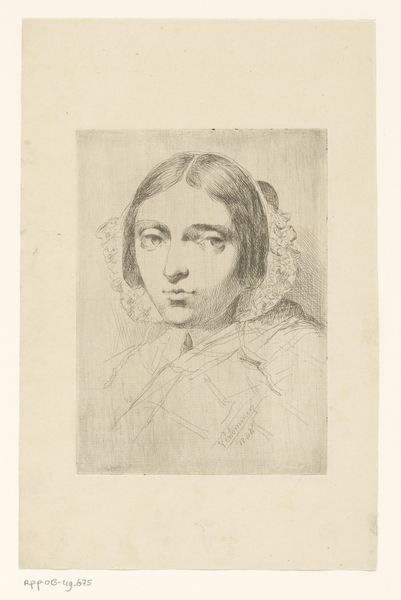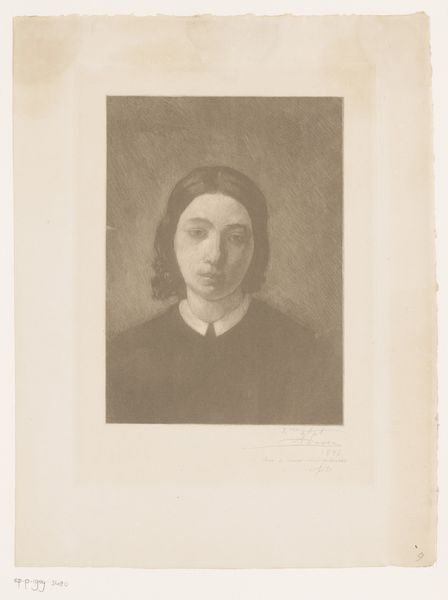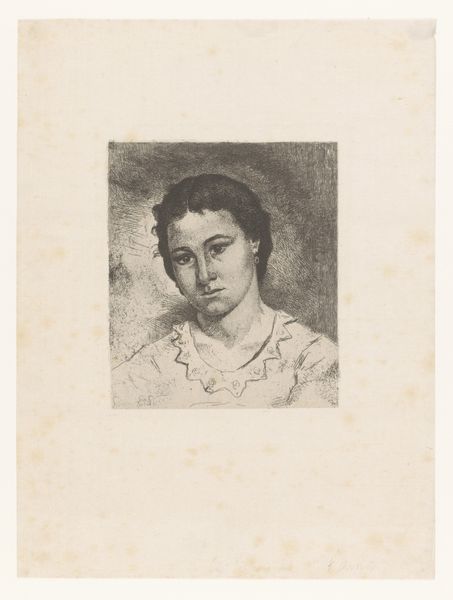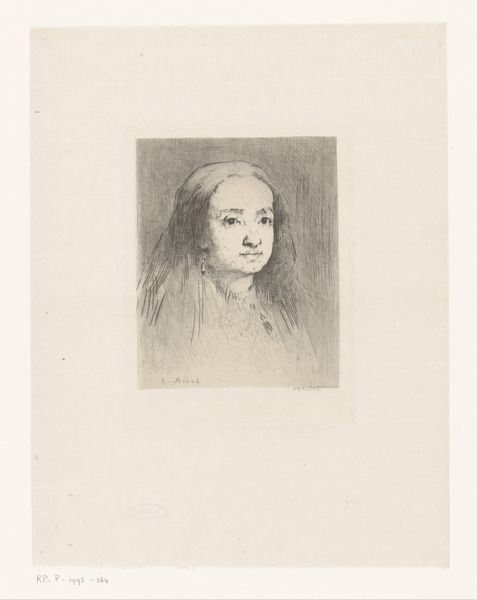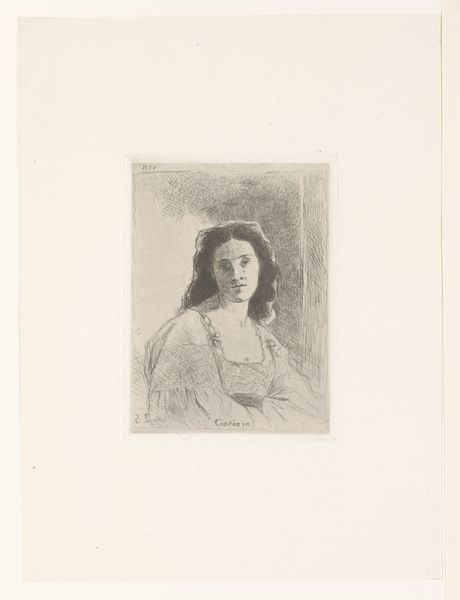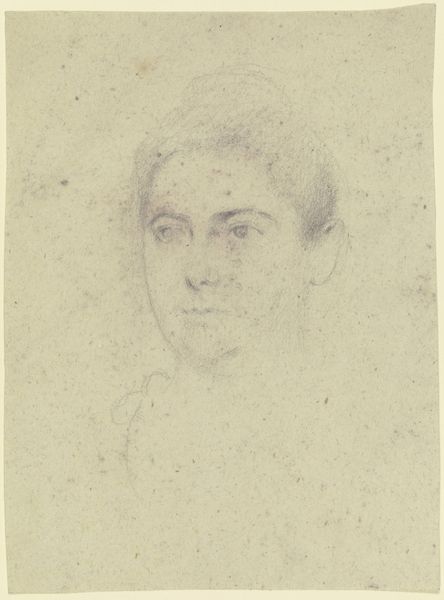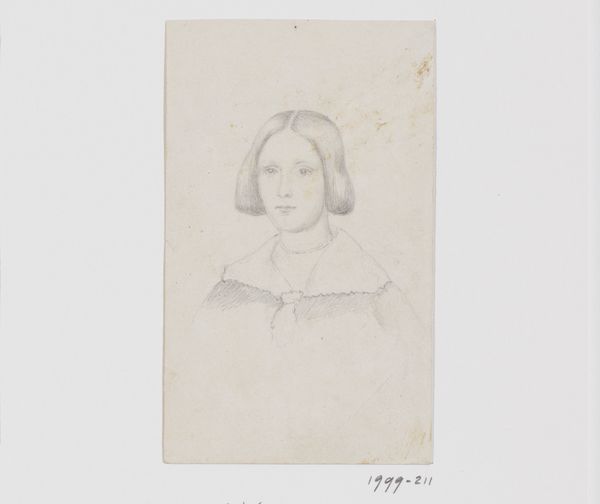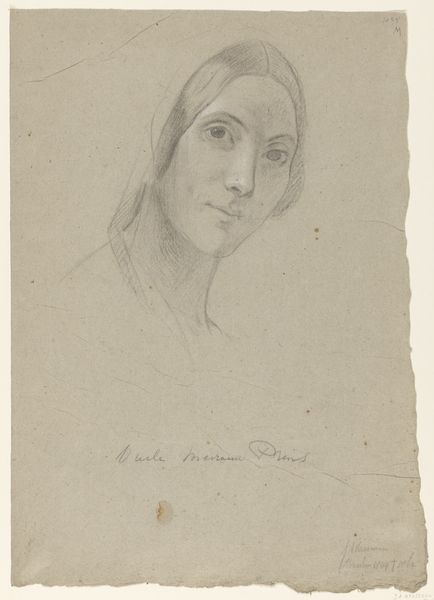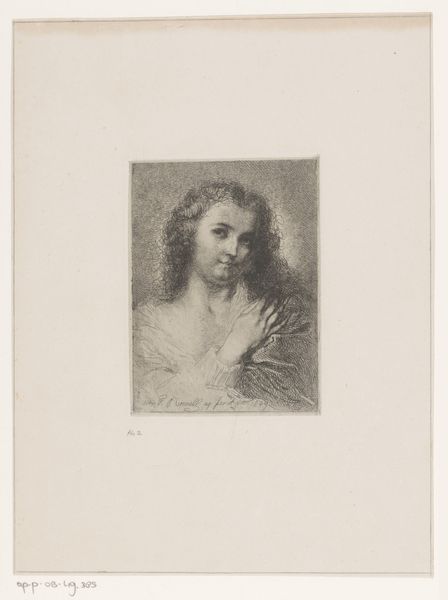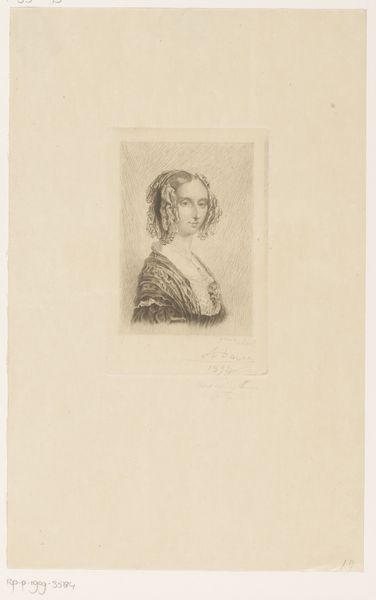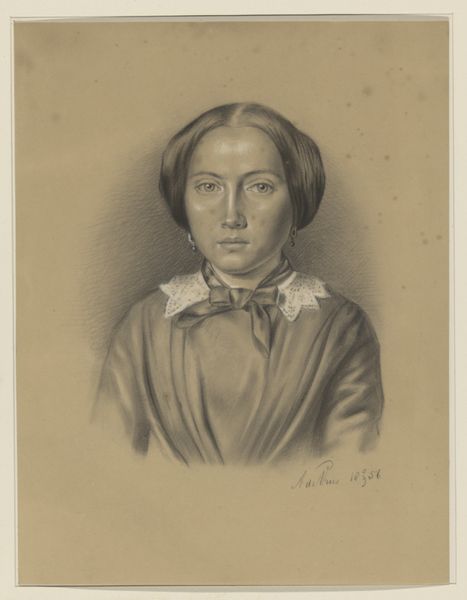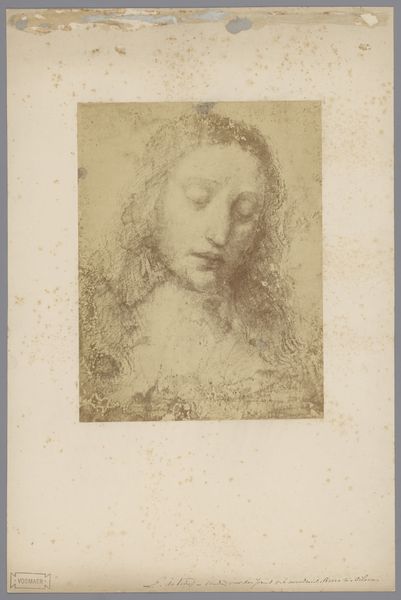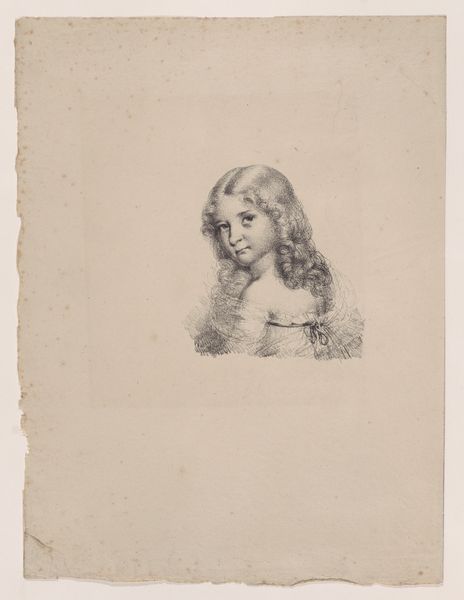
drawing, pencil
#
portrait
#
drawing
#
figuration
#
romanticism
#
pencil
#
realism
Dimensions: height 140 mm, width 99 mm
Copyright: Rijks Museum: Open Domain
Curator: Immediately striking, isn't it? There’s a vulnerability to the piece, a fragility in the very pencil strokes. Editor: Indeed. What are we looking at? Curator: This drawing, titled "Hoofd van een vrouw" – “Head of a Woman” – was created by Guillaume Joseph Vertommen, around 1841-1842. It's currently housed right here at the Rijksmuseum. Vertommen utilized pencil, a medium readily accessible, to create this portrait. Think about that directness. Pencil to paper. What story can we unlock about material use? Editor: It is deceptively simple in its construction. The subject's gaze is unsettling – or perhaps invites reflection. How does this depiction interact with the prevailing gendered portrayals within art of that era? Was it subversive to display such rawness of emotion, the slight dishevelment of the lace? I wonder what kind of politics play a part here? Curator: The roughness actually intrigues me; how the artist has not opted for a perfect finish—but we must also consider that portraiture in that era was being revolutionized by the rise of photography, and its unique ability to freeze a specific image in time. Vertommen worked around the problem using materials and working in an economical way; for instance, look at how he captures light with minimal hatching. It allows a play between light and dark; an immediate sense of depth. Editor: The unidealized representation feels conscious, almost defiant when contextualized alongside mainstream portrayals which enforced restrictive feminine identities. Could this piece function as a visual assertion of individuality beyond prescribed social constraints? How do viewers then and now interpret agency here within societal power imbalances that inform perceptions around female subjecthood and visibility? Curator: Precisely! It becomes fascinating if one speculates about whether or not she was able to consent to it, what type of payment was given. When we explore beyond the physical qualities we realize there is so much labor behind artworks and how labor can shape representation! Editor: Yes, you make such compelling connections, especially by contextualizing art's power. I now notice aspects previously unnoticed, like, where I'd seen meekness, I now detect resolute courage in these barely-there pencil marks. Curator: It’s in exploring this interweaving of materials, technique and socio-economic conditions which truly lets a drawing sing! Editor: Exactly.
Comments
No comments
Be the first to comment and join the conversation on the ultimate creative platform.
